A perfect day to welcome the RCAF
For many Yukoners, aircraft are an important part of life – at the very least as a way to travel. Yesterday I went to the Whitehorse airport to see the air display that’s been part of our end-of-winter Rendezvous events since 1971, when 2 aircraft were on display.
In the 2013 program for what was then called the Yukon Sourdough Rendezvous, it was said that the air display was “considered to be one of the largest civilian air shows in Canada,” and that it was attracting 6,000 people each year.
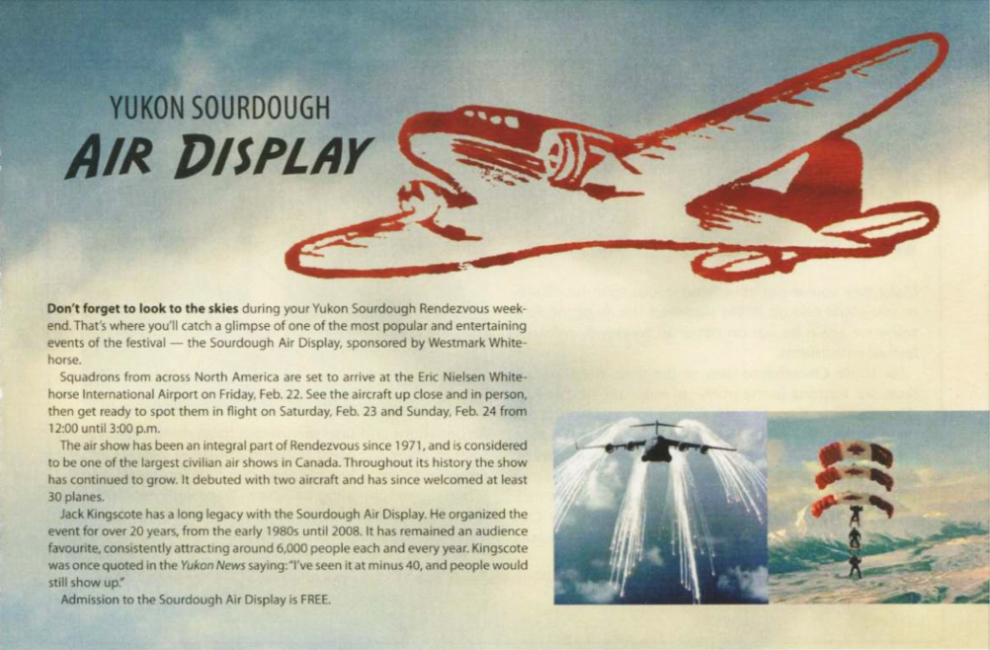
The number and type of aircraft that attend has varied dramatically over the years, depending on the operators’ budgets and other committments. Looking back at the over 500 photos in my Rendezvous air display folder, I see a wide range of shows. In 2003, we had the Snowbirds flying!
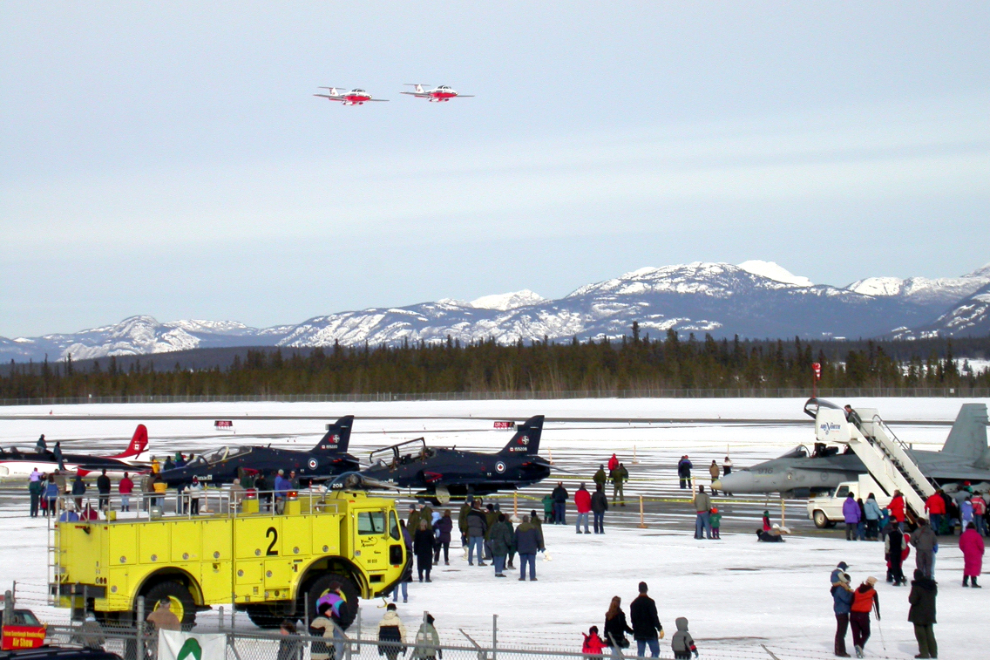
We’ve had some truly dreadful weather during Rendezvous, but not even -40 temperatures, heavy snow, and near-blizzard conditions can keep airplane fans away! 🙂 The next photo was shot in 2011.
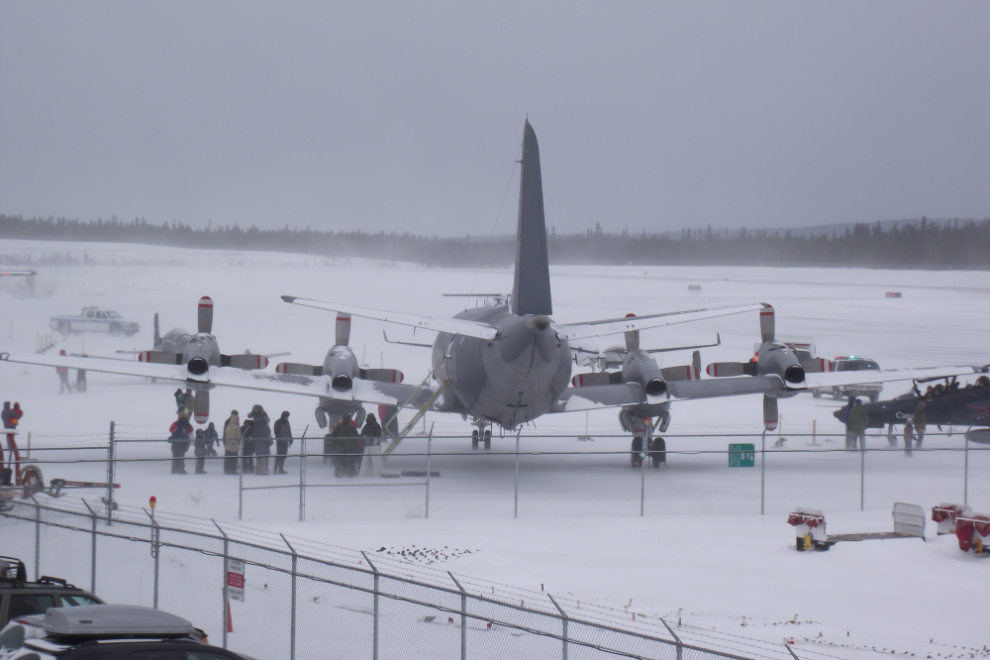
It is now called the Kingscote Air Display, named for Jack Kingscote, who was a driving force for the show for many years. In 1991 Jack and his wife Myrna received the Commissioner’s Award for Public Service for their commitment to Rendezvous. This year, the Rendezvous program said “The display can consist of jets, helicopters, Auroras, Hercs, Cormorants, Dash-8, Harvards, etc. depending on which aircraft can visit. This year is the 100th anniversary of the Canadian Airforce, so we hope to have a large attendance!” The Royal Canadian Air Force is indeed putting on a good show, with 5 of the 6 aircraft on the ramp bearing RCAF livery. This is not only their 100th anniversary, it’s also the 50th anniversary of their first show in the Yukon, which was at Rendezvous in February 1974. The next image is a screenshot of the RCAF Centennial website.

When I got to the airport yesterday just before 1:00, the first photo I shot, from the terminal, was of a helicopter that wasn’t part of the display, but it was one I hadn’t seen before. N376PA is a 1978 Bell 212 operated by Pathfinder Aviation of Anchorage, Alaska. Cool paint job!
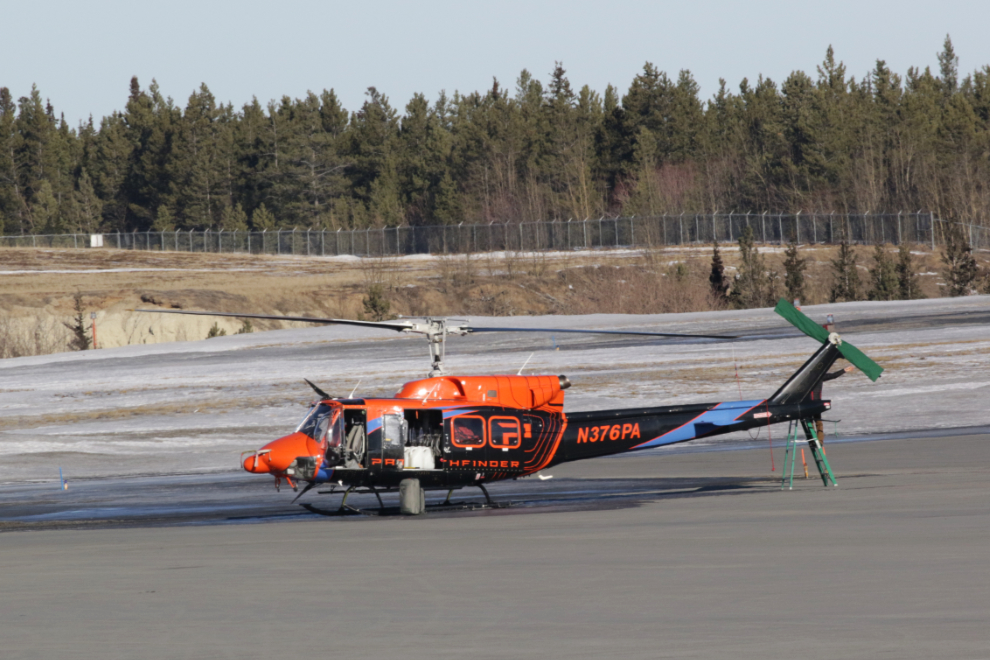
I had driven past the airport a few times over the past couple of days and could see no indication that any aircraft were coming, but a friend posted some photos of a Boeing CH-147F Chinook arriving, and that was enough to get me out of the house. I was pleased with the look of what was happening on the ramp, and walked down.
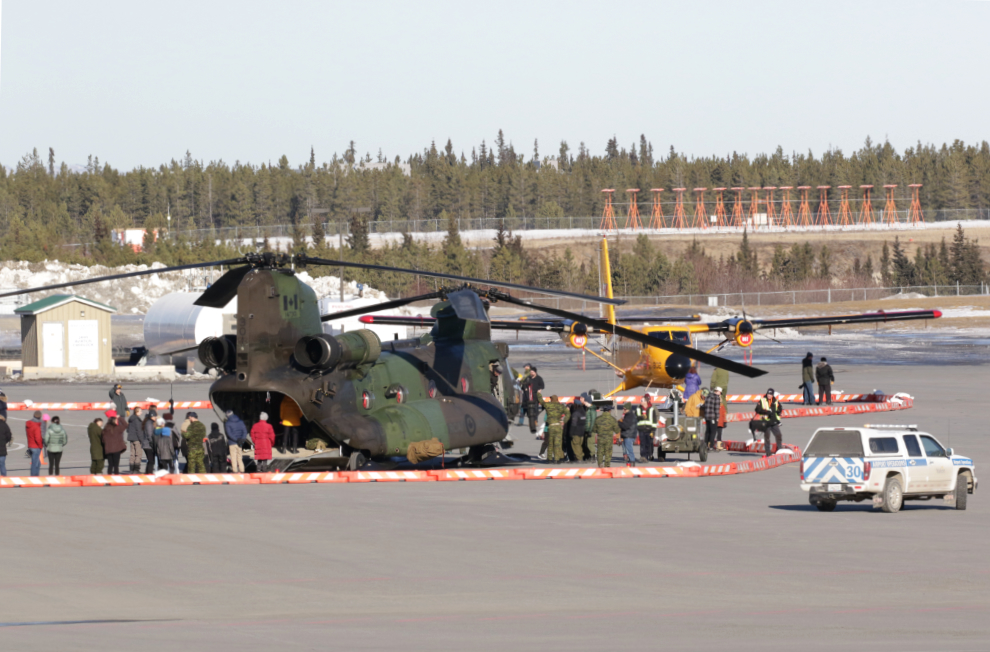
With perfect timing, an Air North 737 headed to Vancouver added some action to the static displays. I don’t remember when flying as part of the Rendezvous event ended, but it feels like a long time ago.
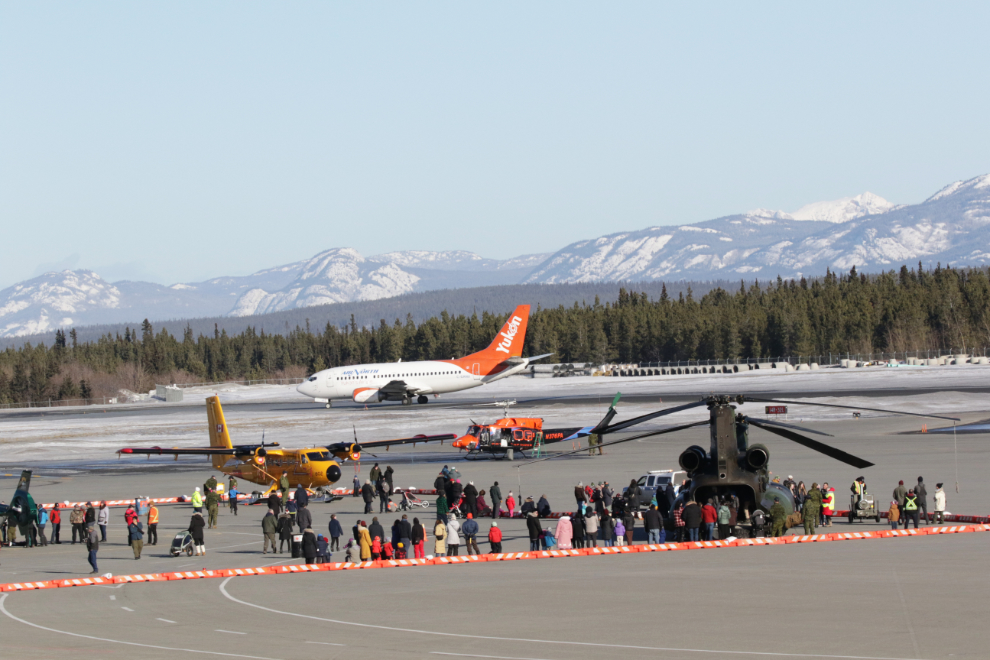
I had parked in the regular airport parking lot, and it was a fairly long and icy walk to the aircraft. There was parking for the air display much closer, but it was busy and confusing, and dealing with that would lessen the amount of time I could spend with the planes, so the walk was good.
Conditions were absolutely perfect – it was sunny, with no wind and -10°C/+14°F. The Chinook was drawing the biggest crowd but every plane had its share of admirers.
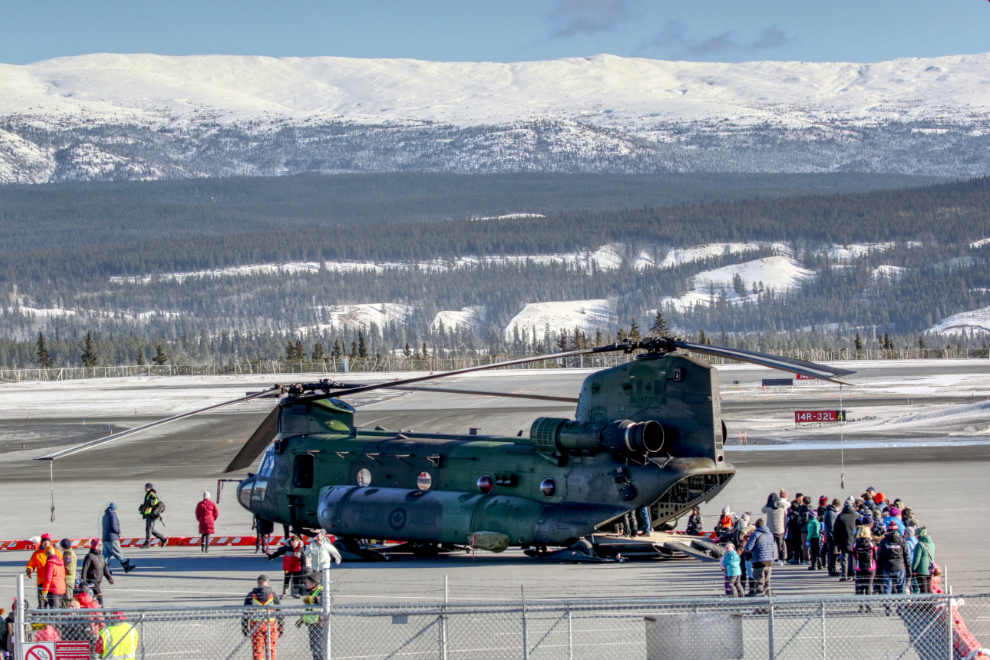
One last distant photo with the 100-400mm lens, then I switched to the 24-105mm and went down to the ramp for a close look.
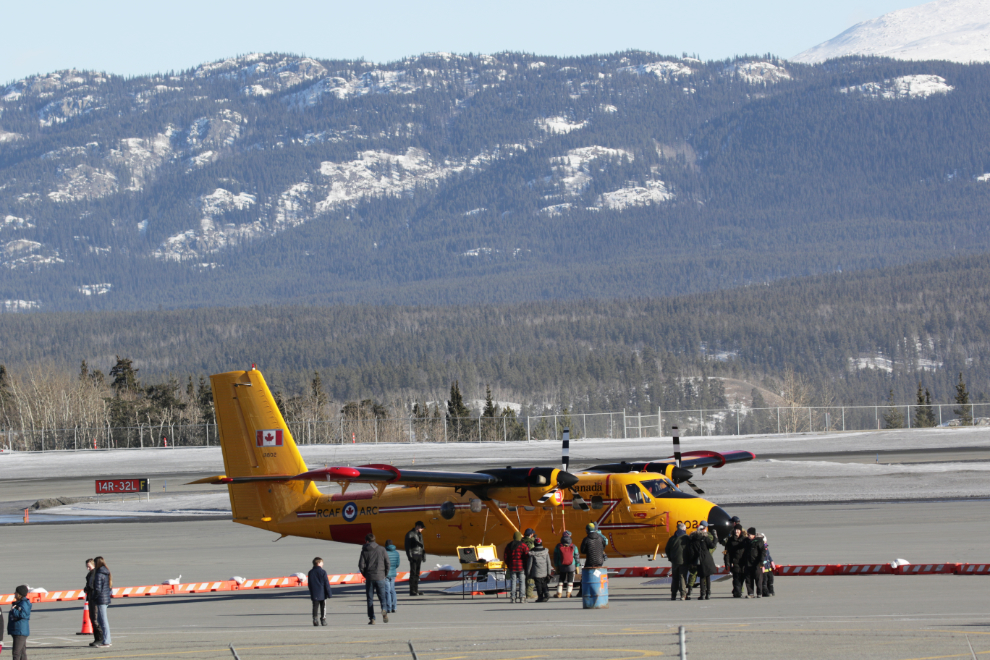
Two things struck me immediately – there were a lot of Air Force members on hand to talk to people, and there were a lot of kids. I really love to see kids taking a strong interest in planes. Perhaps some will end up in the air force or in the aviation industry in some form.
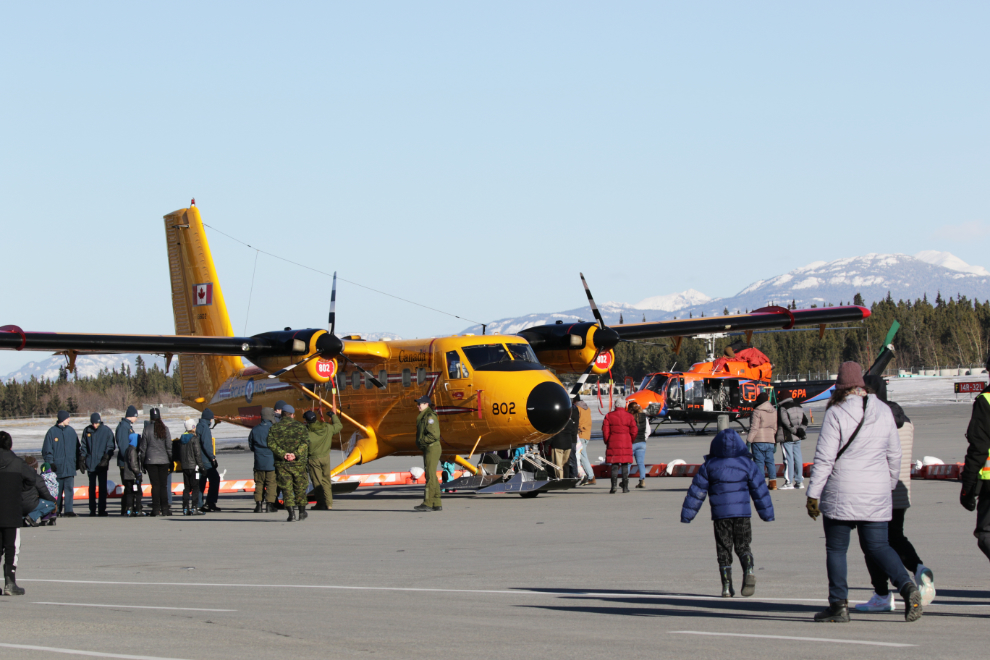
I started my tour off at the British Aerospace CT-155 Hawk – RCAF #155204, based at 4 Wing Cold Lake in Alberta.
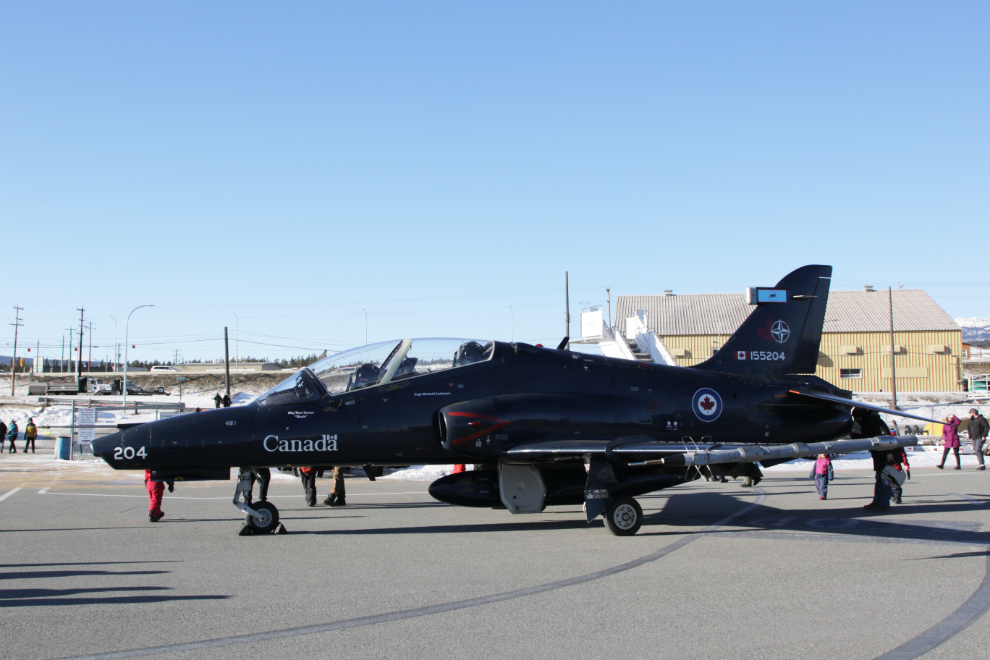
The CT-155 Hawk is an advanced jet trainer for pilots aiming for front-line fighter aircraft. It’s small (12.42 meters long) and maneuverable, and has a top speed of 1,482 km/h.
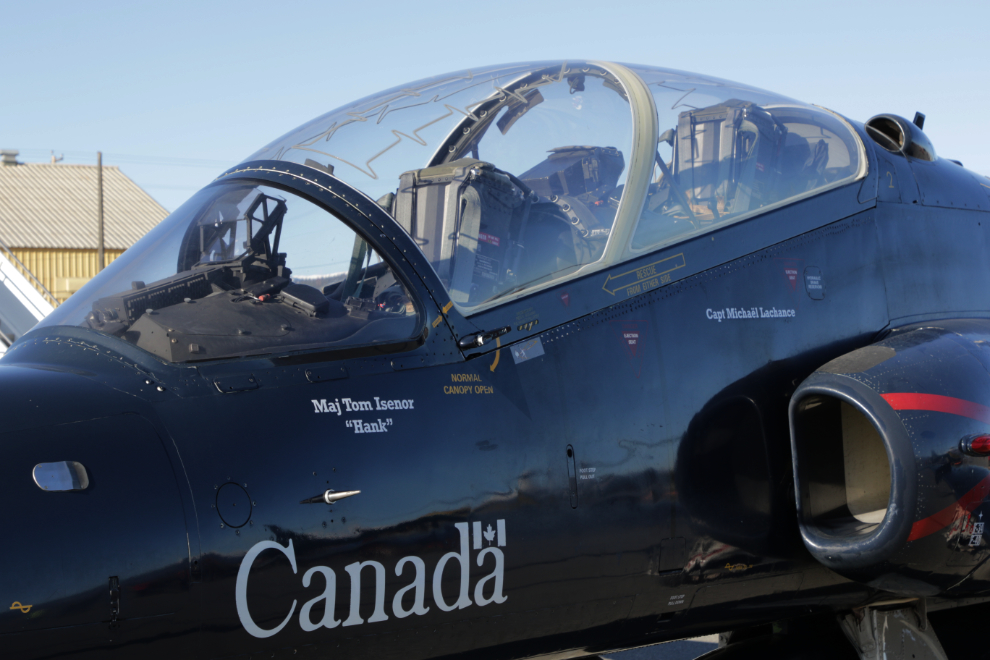
Yes you would look good sitting in that, kid 🙂
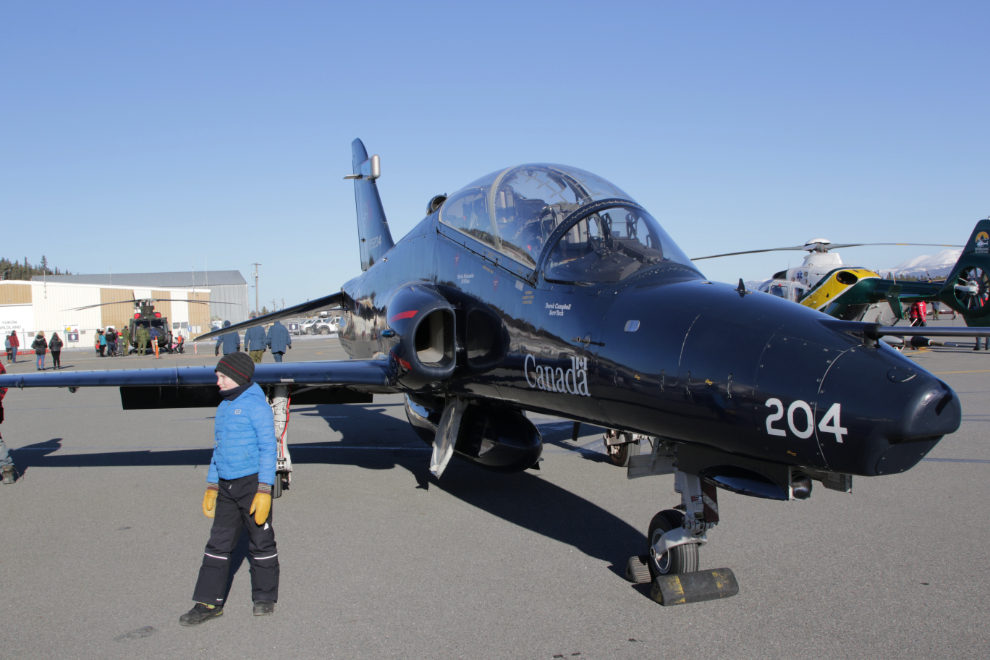
The next aircraft to get my attention was Horizon Helicopters’ medevac/rescue helicopter, the only civilian aircraft in the display. C-FCHT is a 2006 Eurocopter EC135 P2+ with special modifications for its role.
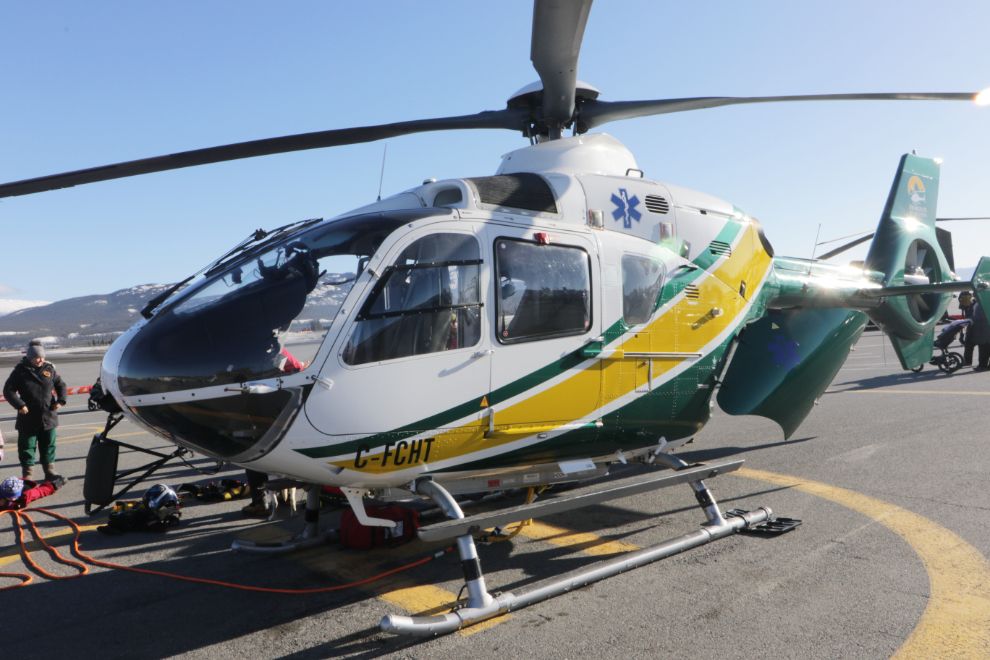
This is an impressive helicopter, with a cruise speed of 254 km/h (158 mph) and a service ceiling of 6,096 meters (20,000 feet). For reference, the highest mountain in the Yukon is Mount Logan at 5,959 meters (19,551 feet).
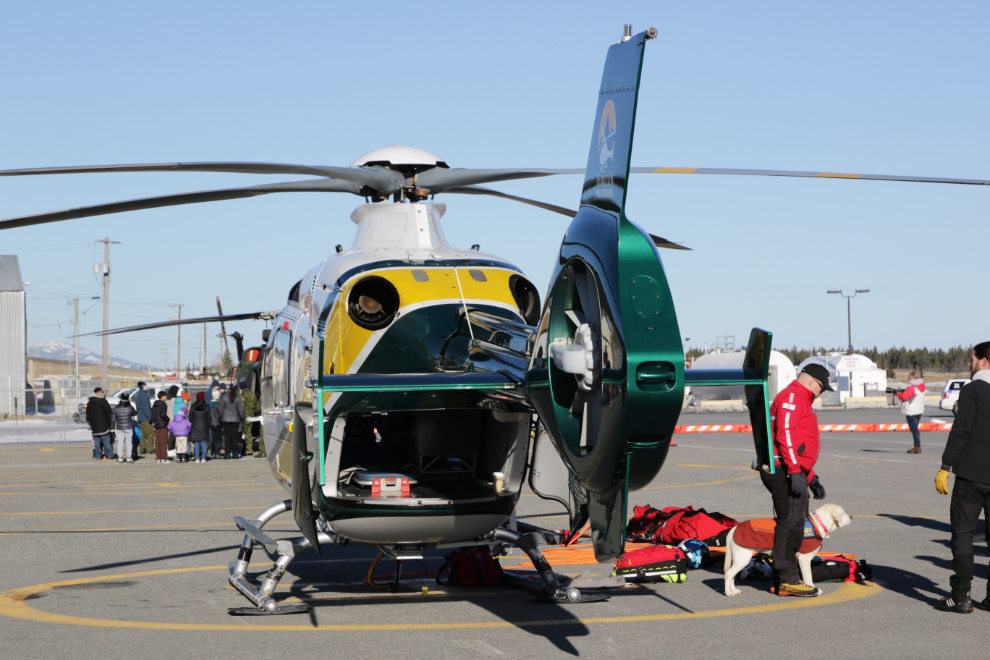
It can carry an extensive array of rescue and medical equipment, including a dog (seen in the above photo).
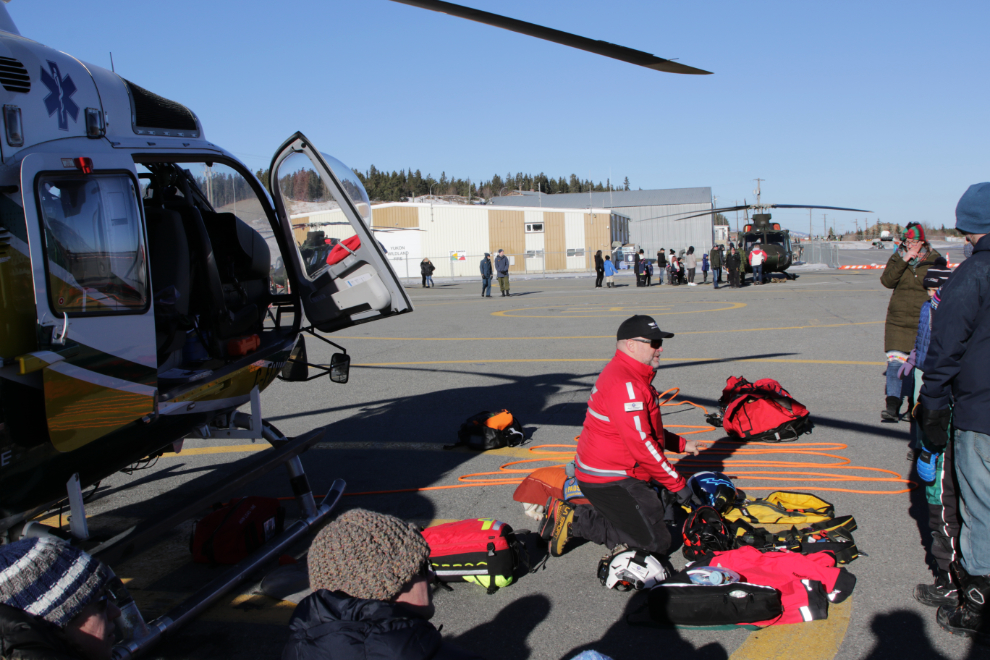
I shot the next photo because it’s a great-looking jacket, but TEAAM Aeromedical is an organization worth knowing about: “TEAAM is a not for profit society comprised of advanced care and primary care paramedics, emergency physicians, nurses, technical rescue specialists and other mountain professionals dedicated to providing leading edge pre-hospital care and transport in austere settings.”

There were two CH-146 Griffon utility tactical-transport helicopters from CFB Cold Lake, and they had good lineups of people wanting to see how the driver’s seat felt 🙂 It’s an extremely versatile machine, supporting the tactical transportation of troops and materiel as well as search and rescue operations, surveillance and reconnaissance, training, casualty evacuations and counter-drug operations.
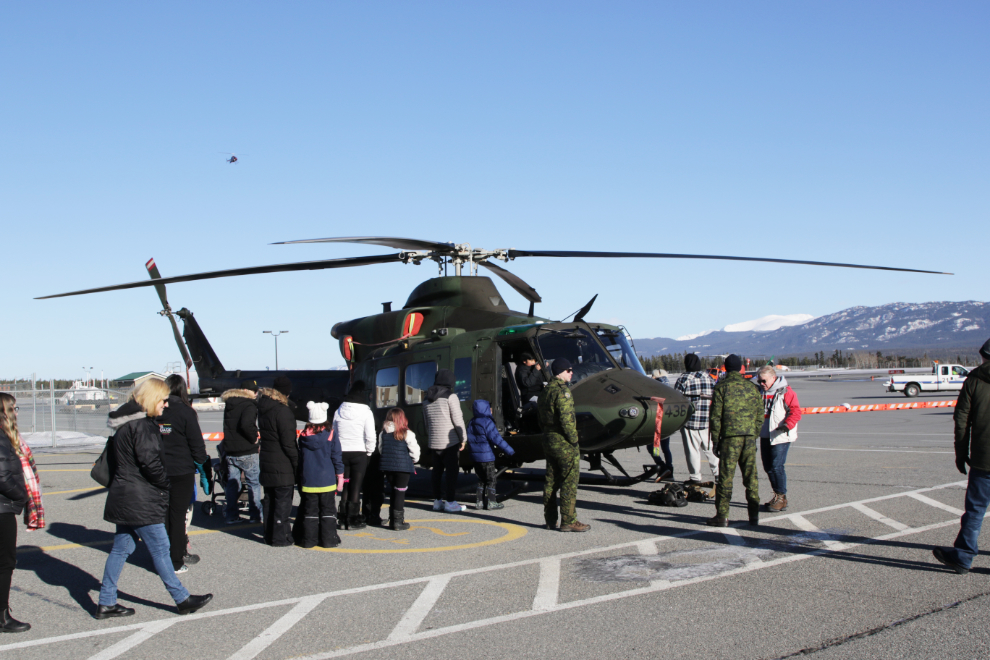
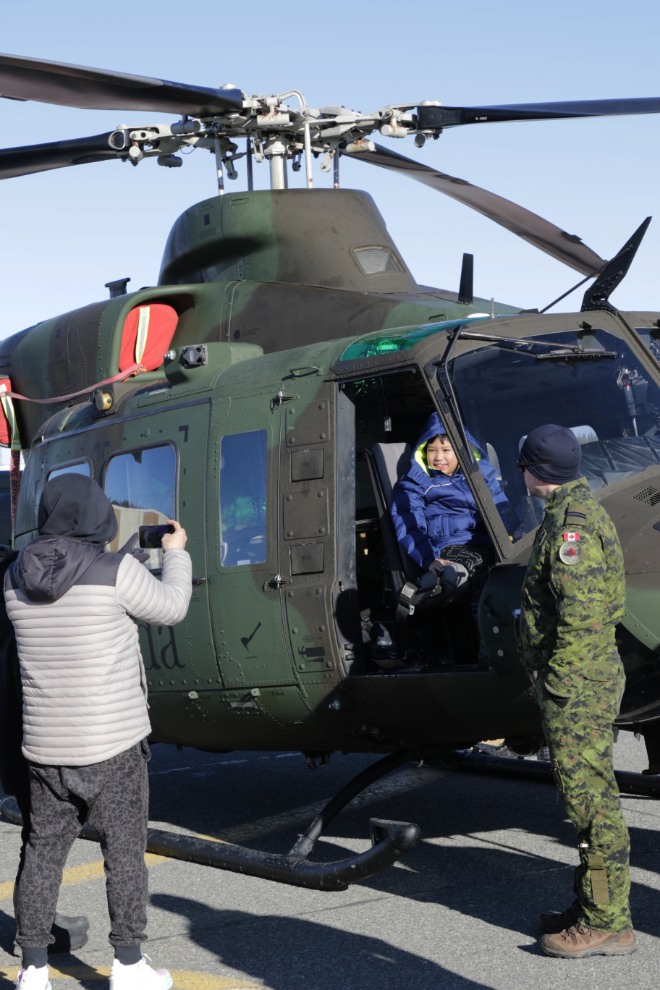
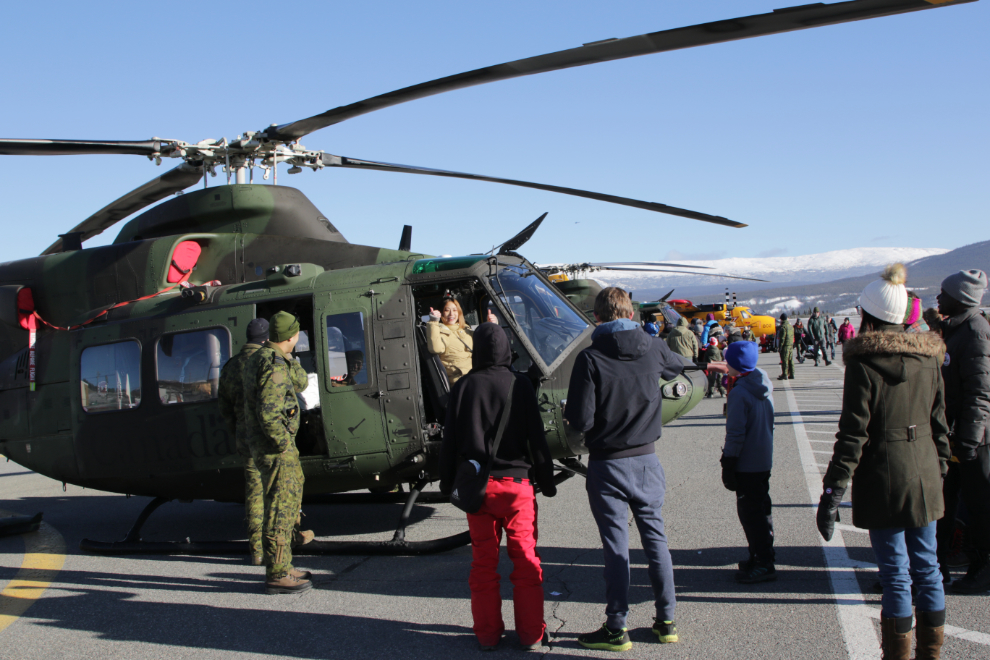
I’ve always been a big fan of de Havilland Canada’s DHC-6 Twin Otter – the CC-138 Twin Otter to the RCAF. I have a few hours in them, both as a search-and-rescue spotter with CASARA and as a tour guide in the NWT. Although #13802 looks like it just rolled out of the factory, it’s actually 53 years old. It was built in early 1971, and has been based in Yellowknife since September 1971. The lower of the next two photos of it was shot near Fort Resolution, NWT, by RCAF W/O Eric Jolin.
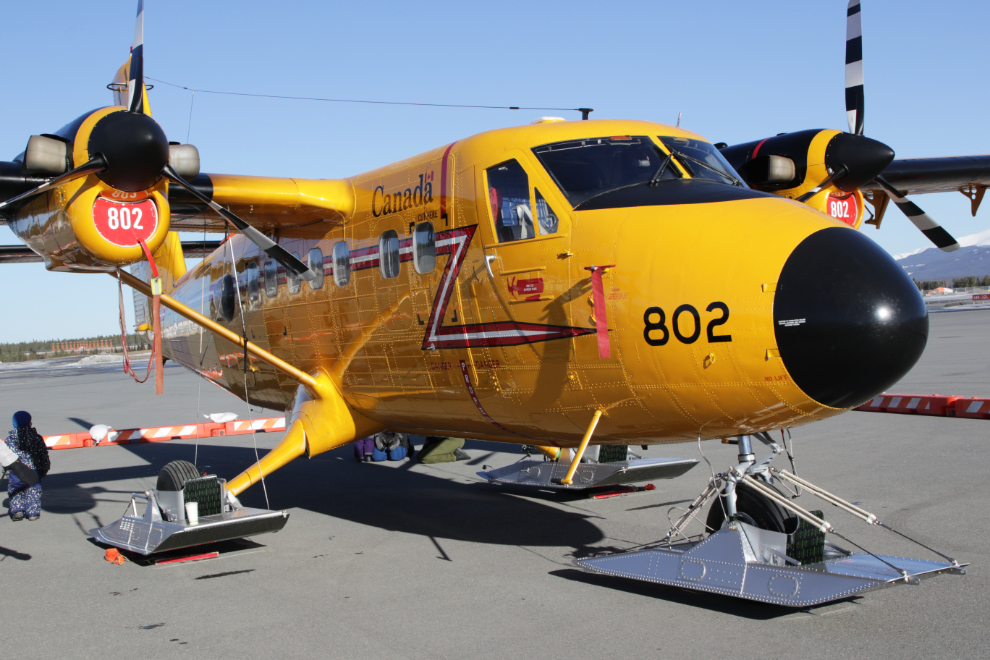
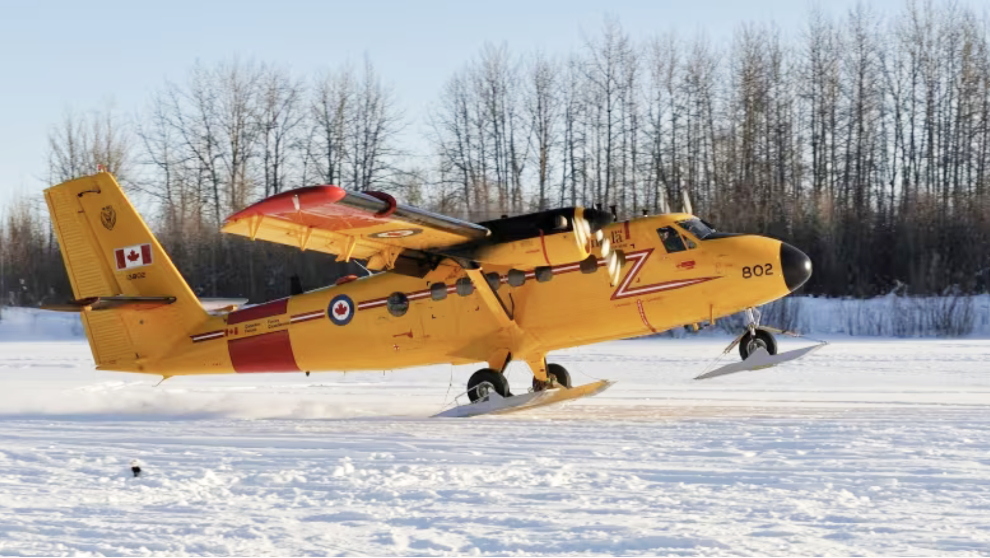
802 is one of four Twin Otters serving with 440 Squadron at Yellowknife. The jacket patch says “Air Mobility – Arctic Bats,” the bat suggesting the difficult flying conditions often encountered. The RCAF notes that 440 Squadron “operates these rugged aircraft in some of the harshest weather conditions on the planet and is the only formed RCAF unit that is based full-time in the north.”
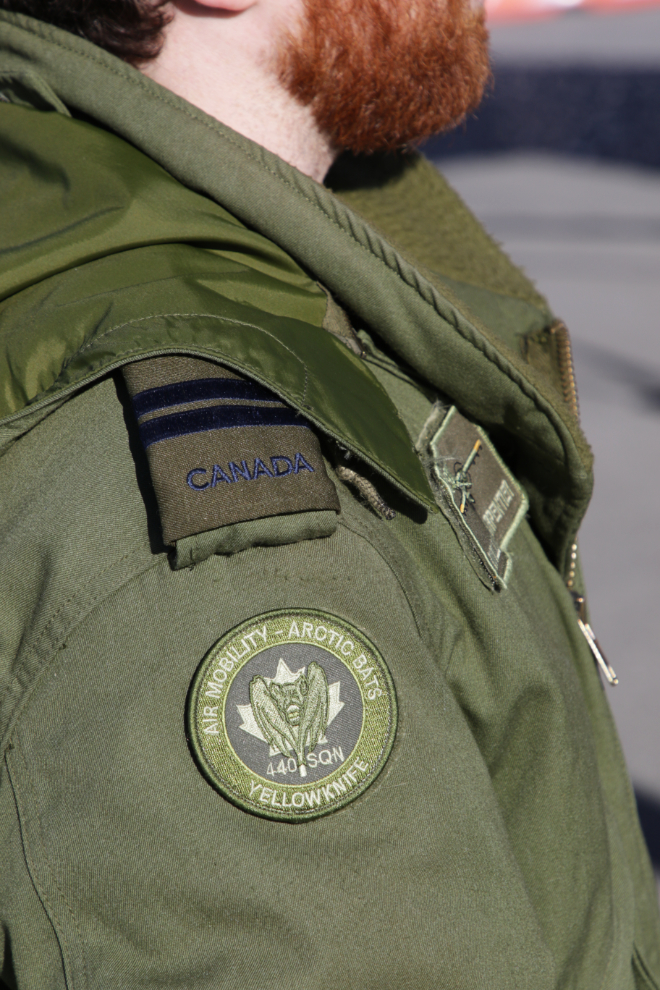
Last but not least, I had a close look at the CH-147F Chinook. This is a very large helicopter, and I switched to my 10mm lens to get the lower of the next two photos of it. How large is it? Well, it’s 15.9 meters long (52.2 feet), and as a maximum gross weight of 24,494 kg / 54,000 lbs.
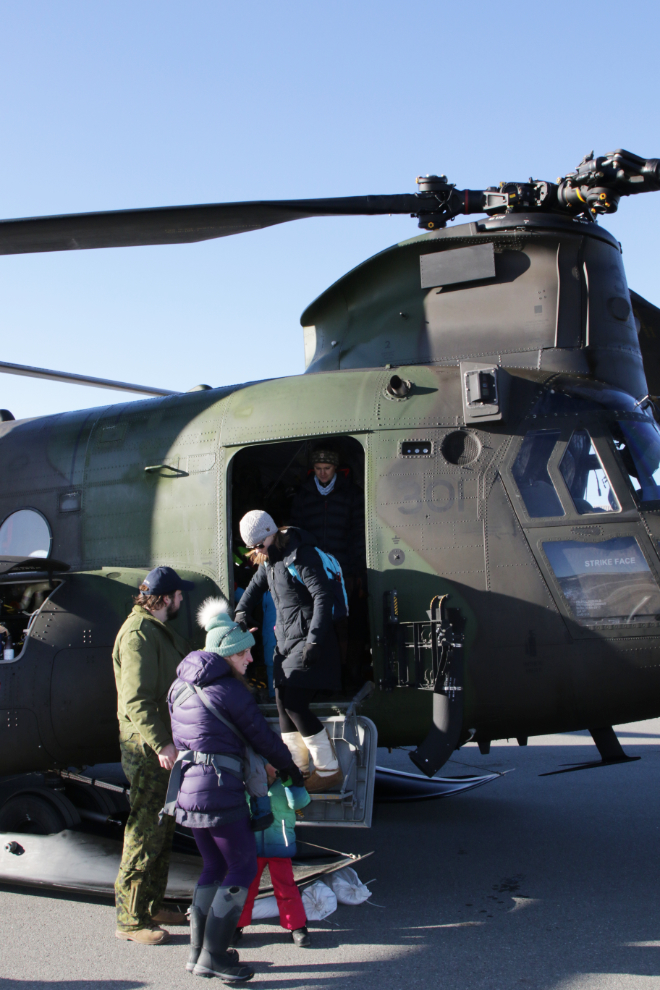
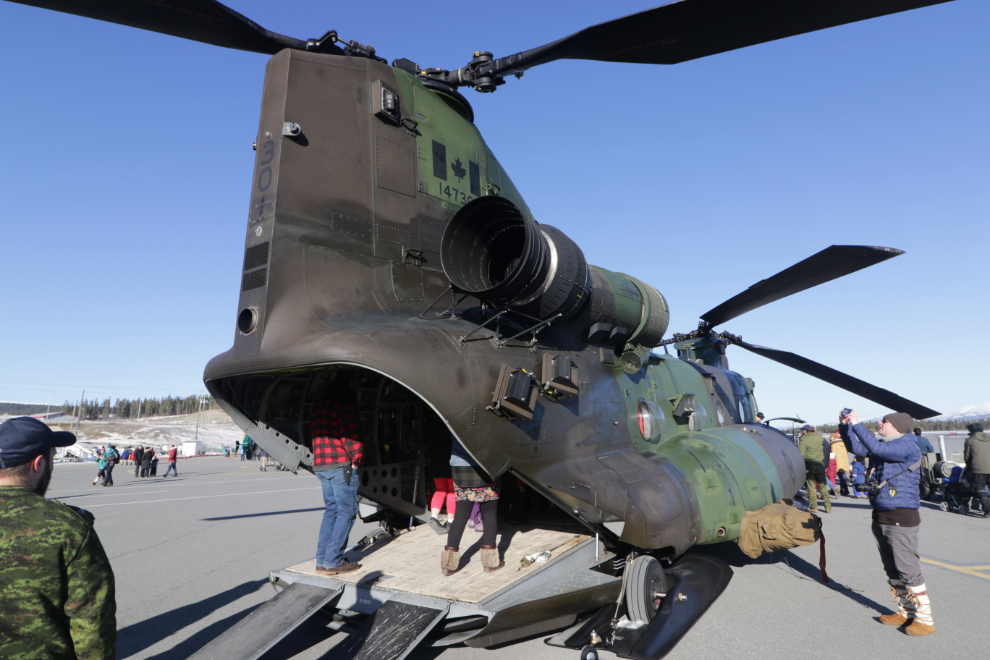
I’ve really enjoyed putting this post together, and depending on how the day goes, may go back again today, to get into some of the aircraft, and talk to the TEAAM folks at the Eurocopter.
This morning got off to a rather odd start, though – the aurora borealis woke me up again. I got up at 02:10, looked outside, and there was a glimmer of aurora. By the time I got my camera set up it was much better, and after shooting the next photo I was actually going to go for a drive to a better shooting location. But in the 10 minutes or so it took me to get out to the car the aurora was gone and clouds had moved in. So I started work on the blog 🙂
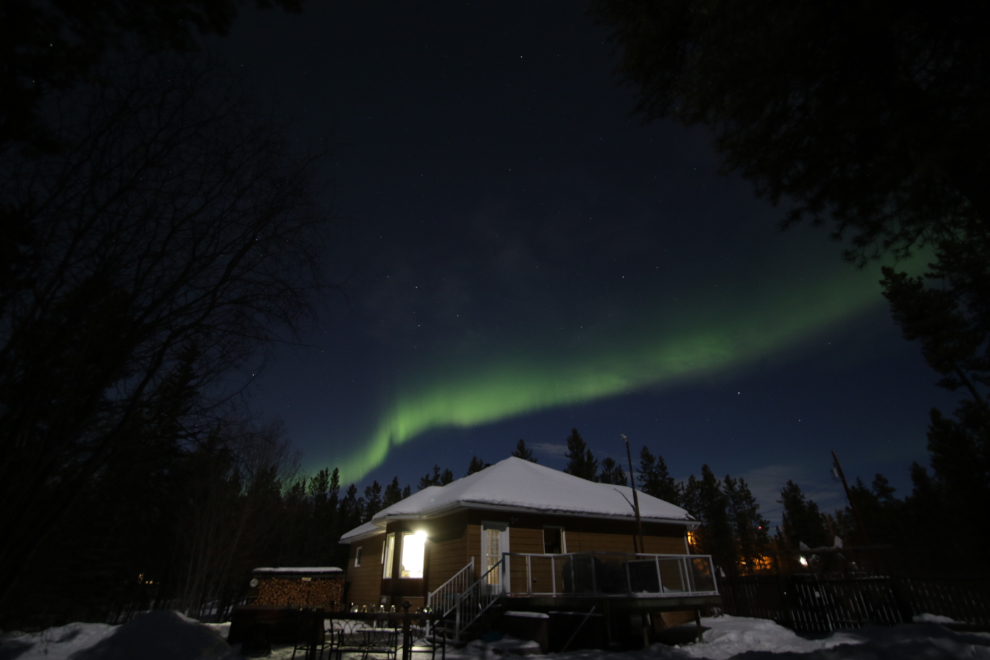

Have always loved the Twin Otter for all the places it can get into, far north, far south…and sure looks good on skis or floats… Those big two rotor choppers sure are impressive in the air. I live near an aviation maintenance facility for military helos… fun to try to ID them based on noise alone.